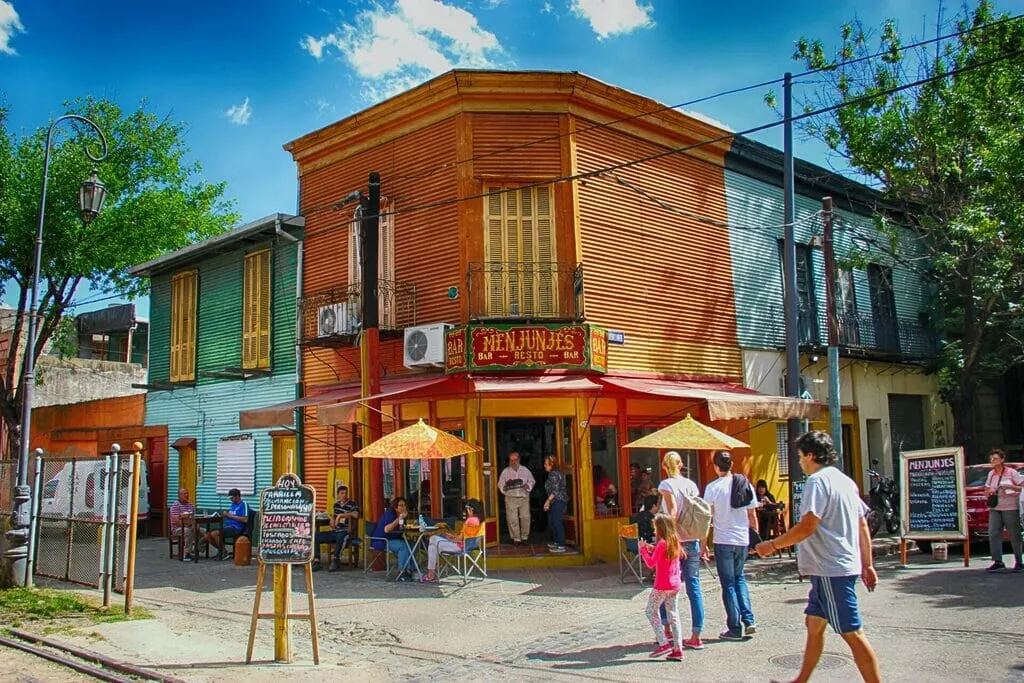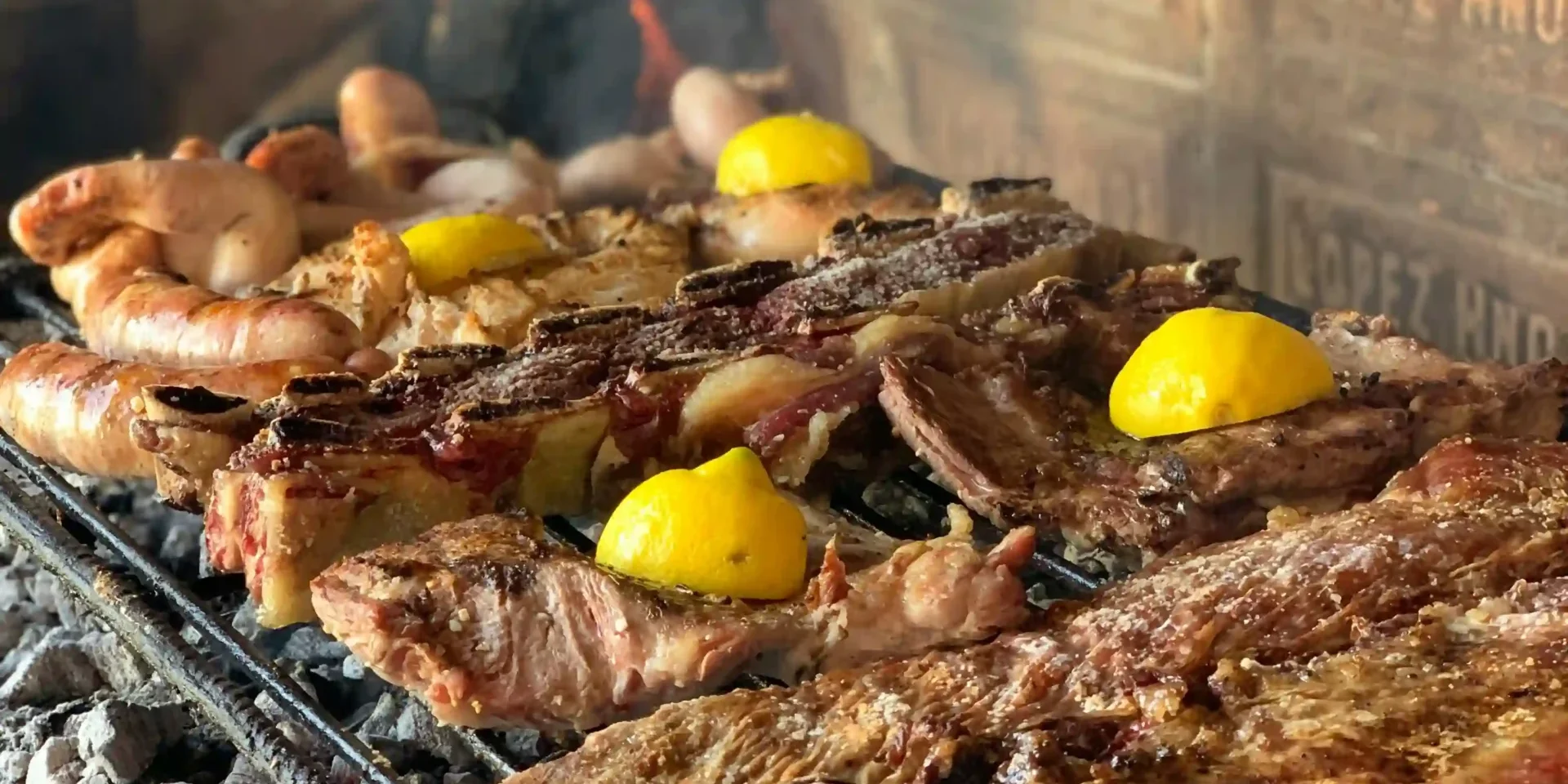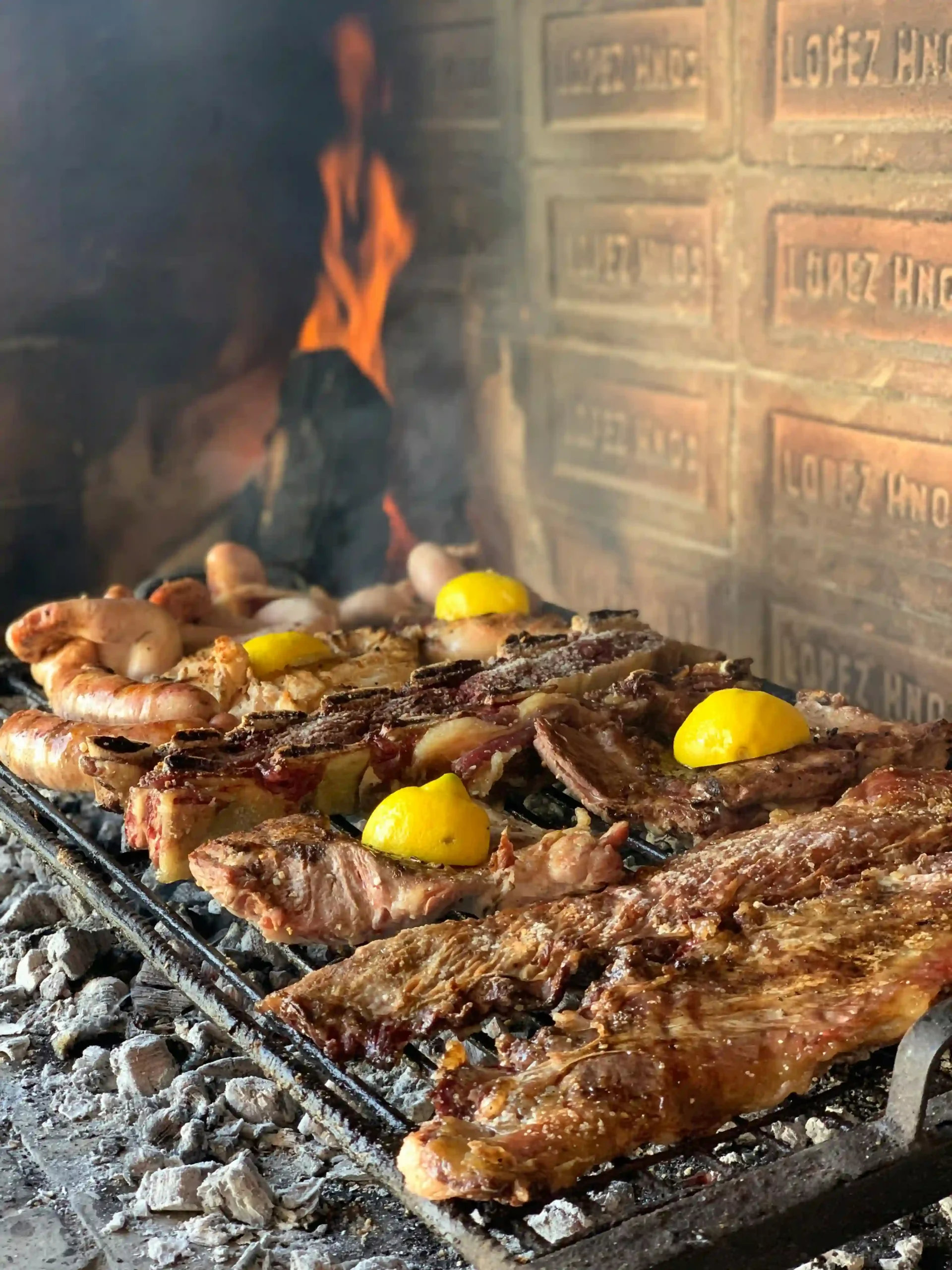Buenos Aires is a dynamic city known for its rich cultural heritage, captivating architecture, and thriving fashion scene. As one of South America’s premier shopping destinations, the city effortlessly blends luxury boutiques, unique local brands, and vibrant markets. Whether you’re looking for high-end fashion, artisanal crafts, or rare vintage finds, Buenos Aires it’s the best place to get a real shopping experience that caters to every style and budget.
In this article, we’ll guide you through Buenos Aires’ top shopping destinations, offering insights into the city’s most iconic malls, eclectic boutiques, and lively markets. Each area provides a unique atmosphere, allowing shoppers to explore the city’s fashion trends and local craftsmanship while enjoying the vibrant neighbourhoods that house these retail hubs.

1.Shopping Patio Bullrich
Located in the heart of the prestigious Recoleta neighborhood, Patio Bullrich stands as one of Buenos Aires’ most luxurious shopping malls. Housed in a beautifully restored 19th-century building, it exudes an air of elegance and sophistication. The mall is a haven for those seeking high-end fashion, offering an impressive selection of international luxury brands such as Calvin Klein, Diesel, Ayres, Etiqueta Negra, and Hugo Boss. It also showcases local designers, making it a blend of Argentine craftsmanship and global style.
Shopping Tips: Patio Bullrich tends to attract a high-end clientele, so expect to find exclusive boutiques and designer shops. The mall’s quieter atmosphere makes it ideal for those looking to shop in a refined setting. We recommend visiting during weekdays to avoid the weekend rush and enjoying lunch at one of the nearby upscale restaurants in Recoleta.
Address: Av. del Libertador 750, Recoleta
2. Distrito Arcos
In the trendy Palermo district, Distrito Arcos is an open-air outlet mall set within the arches of a former train viaduct. This shopping spot offers a more relaxed atmosphere with lush greenery and trendy seating areas scattered throughout. It’s a great place for bargain hunters, as many of the stores are outlets offering discounted prices on well-known local and international brands such as Billabong, Sarkany, Prune, and Adidas.
Shopping Tips: The best time to visit Distrito Arcos is during the afternoon when the shopping center is less crowded, allowing you to explore the various stores at your own pace. Take a break at one of the numerous coffee shops or grab a snack from the nearby food trucks. The vibrant Palermo neighbourhood offers a range of dining options, perfect for a post-shopping meal.
Address: Paraguay 4979, Palermo
3. Unicenter
Located in the northern suburb of Martínez, Unicenter is one of the largest shopping malls in Latin America. With more than 300 stores, it’s a go-to destination for families and anyone looking for variety. From popular fashion retailers like Zara, and Nike to department stores and entertainment options such as cinemas and an arcade, Unicenter has something for everyone. It also houses an extensive food court, featuring both international fast-food chains and local cuisine.
Shopping Tips: Unicenter is popular on weekends, especially with families. To avoid the crowds, it’s best to visit during weekdays or early mornings. For those with children, the entertainment area is perfect to keep kids occupied while adults explore the shopping offerings. Additionally, the mall is easily accessible from downtown Buenos Aires by car or public transportation.
Address: Paraná 3745, Martínez
4. Abasto Shopping
Abasto Shopping, located in the Balvanera neighbourhood, is housed in what was once the city’s largest fruit and vegetable market. The mall’s art deco architecture is a nod to its historic past, and today it stands as a major shopping destination. Abasto offers a mix of mid-range international brands like Puma and local labels like Prüne. It’s also home to the Museo de los Niños, a popular children’s museum that makes it a family-friendly destination.
Shopping Tips: Visit in the early afternoon to take advantage of the mall’s quieter hours. Abasto is also known for its cultural history, so make time to explore nearby landmarks such as the Carlos Gardel Museum. With tango roots deeply embedded in this area, you might even catch a street performance.
Address: Av. Corrientes 3247, Balvanera
5. Calle Florida (Downtown)
Calle Florida is one of Buenos Aires’ most iconic pedestrian streets and a must-visit destination for shoppers exploring the city’s vibrant Microcentro. Stretching from Plaza San Martín to Avenida de Mayo, this bustling street offers a mix of shopping, cultural landmarks, and street performances. Florida Street is a melting pot of old-world charm and modern retail, with some international brands alongside Argentine shops specializing in leather jackets, footwear, and jewellery. The variety of stores makes it a perfect destination for tourists and locals alike looking for Argentine craftsmanship.
Shopping Tips: Florida Street can get quite crowded, especially during the lunch hour, when workers from nearby offices fill the street. The best time to visit is in the morning or early afternoon, when the area is quieter. Keep an eye out for impromptu tango performances on the street, and after shopping, take a short walk to Plaza San Martín for a relaxing break. Nearby dining options range from quick bites to traditional Argentine steakhouses, ideal for refuelling after a busy day of shopping.
Address: Florida Street, Microcentro
6. Galerías Pacífico
Located in the bustling heart of Buenos Aires on Florida Street, Galerías Pacífico is a shopping mall and cultural landmark. Its stunning interior features a domed ceiling adorned with murals by renowned Argentine artists, making it a destination for both shoppers and art lovers. The mall houses a mix of luxury brands such as MAC, Swarovski, and Ralph Lauren alongside popular Argentine designers.
Shopping Tips: Given its central location, Galerías Pacífico can become quite busy, especially during the tourist season. Mornings are the best option to visit if you’re looking for a quieter shopping experience. Don’t forget to look up and admire the impressive ceiling murals and art exhibitions.
Address: Florida 753, Microcentro
7. Recoleta Mall
Another gem in the upscale Recoleta neighborhood is the Recoleta Urban Mall. While smaller than other malls, it provides a refined shopping experience, offering a carefully curated selection of stores. Expect to find chic local brands and speciality boutiques selling everything from clothing to unique home decor items.
Shopping Tips: This mall is ideal for those looking to avoid large crowds and enjoy a more intimate shopping experience. After shopping, take a stroll through the historic Recoleta Cemetery or enjoy a coffee at one of the charming cafes in the surrounding area.
Address: Vicente López 2050, Recoleta.
8. Paseo Alcorta Shopping
Situated near the Palermo parks, Paseo Alcorta is known for its trendy mix of local and international brands. It caters to an upscale clientele and features high-fashion boutiques such as María Cher and Rapsodia. The mall also houses art galleries and cultural spaces, making it a blend of shopping and art appreciation.
Shopping Tips: Visit during the day when the mall is quieter. Paseo Alcorta is also a great starting point for exploring the nearby parks and museums, such as the MALBA (Museum of Latin American Art of Buenos Aires), located just a short walk away.
Address: Jerónimo Salguero 3172, Palermo
9. Juan Pérez Vintage
For those with an eye for unique vintage pieces, Juan Pérez Vintage is a must-visit boutique in the Palermo Soho area. Specializing in carefully curated vintage clothing and accessories, this boutique offers rare finds that span several decades. From retro dresses to antique jewellery, Juan Pérez has a reputation for its high-quality and eclectic selection.
Shopping Tips: This boutique is a favourite among fashion-forward locals, so be sure to visit early in the day for the best selection. Palermo Soho is also a hub for cafes and street art, you can join our private guides through the neighbourhood.
Address: Honduras 4865, Palermo Soho
Why Buenos Aires is a Must-Visit Destination for Shoppers
Buenos Aires offers a shopping experiences that seamlessly blends tradition with modernity, making it a must-visit destination for shoppers. With Argentina’s current economic climate, foreign visitors often find luxury items and designer goods at more accessible prices compared to other global cities.
From the fashion-forward to the traditional, Buenos Aires has something for every shopper. We encourage you to dive into its retail culture, where each neighborhood tells a different story through its stores, boutiques, and markets.
Ready to Explore Beyond the Shopping Malls?
While Buenos Aires is a fantastic destination for shoppers, the city’s true character is found in its vibrant culture and amazing flavors. If you’re ready to take a break from the storefronts and discover the authentic, local side of the city, we’ve got you covered.
- Discover Our Buenos Aires Food Tours: Join a Sherpa tour to experience the real food culture and hidden gems that most shoppers miss.
- More Insider Tips: Check out our full Buenos Aires Travel Guide for more recommendations!






















































